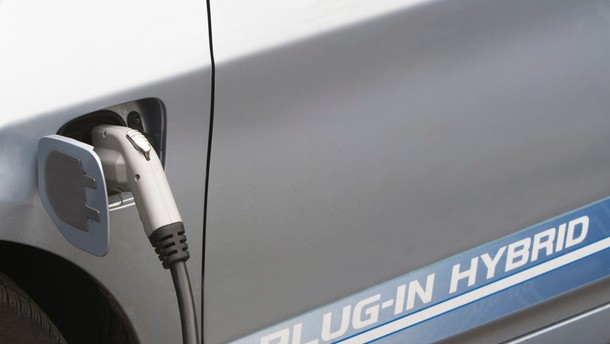
A plug-in hybrid – also called a plug-in hybrid electric vehicle (commonly abbreviated as PHEV) – is a hybrid car, combining a gas (or diesel) engine with an electric motor and a high-capacity rechargeable battery. Battery capacities come in various sizes, so PHEV's reach differs from one model to another.
The term 'plug-in' indicates that the batteries are being recharged by plugging them into the electrical grid (for example, a regular 120V outlet in one's household does the job) or a charging station, meaning the car doesn't solely depend on gasoline, but also uses electricity from a simple outlet. In contrast, conventional hybrid cars also use electric motor and battery, but one can't recharge them – instead, they get all the power they need from the gasoline (or diesel) engine.
It is usual for a plug-in hybrid to start off in all-electric mode and then to run on battery juice until the battery is emptied – usually for up to 40 or even 60 miles. After that, the gas (or diesel) motor takes over and the car functions as an ordinary, conventional hybrid.
If one compares global warming pollution caused by electricity and gasoline or diesel, it quickly becomes clear the electricity is usually the more environmentally-friendly choice. While driving in electric mode, there are no emissions coming out of the exhaust pipe, but there is another advantage to look forward to – electric driving means less conventional gasoline-powered driving, which saves the driver a significant amount of fuel costs – even up to hundreds of dollars per year!



